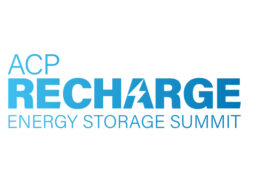Executive Editor Lee Teschler took to the SPI show floor with his camera and captured several sights he found particularly interesting.
A compact way of tracking the sun
Most PV tracking systems use either electric-motor-powered linear actuators or hydraulic cylinders to position panels. Not the NexTracker. The small dc-motor-powered actuation mechanism visible here can handle a single row of panels 80 m long. The system can use the relatively small motor (the black cylinder in the image) because the positioning mechanics pivot the panels on their center of gravity, minimizing the amount of torque needed to rotate the PV surfaces. NexTracker claims its scheme requires 80% less power than conventional tracking actuator systems. The rectangular metal enclosure also visible here contains control electronics and a small back-up battery.
![]()
Beefy switchgear
SPI had its share of utility-scale equipment on display, including this beefy switchgear enclosure at the Eaton Cooper Power Systems booth. Designed to handle a 20-MW PV installation, the pad-mounted connection system included a vacuum fault interrupter, visible in the upper right-hand corner, as well as space for inverter electronics and Scada equipment isolated on the other side of the enclosure wall.

Energy storage in focus
One hot topic at SPI was energy storage as a means of implementing load shaving and similar operations aimed at minimizing disruptions of the utility grid. Among the systems shown was this 13.8 kW-h system from Varta Storage GmbH. The Engion family of storage systems combine an inverter and a bank of Lithiuim-iron phosphate batteries. Battery pack modules can slide out for replacement if need be, as shown here by Fred Schellert, General Manager, Marketing & Sales Storage Products and Power Pack Solutions. Each module has about a 415-W-h capacity. Systems hosting lead-acid batteries were in evidence as well, but lead-acid units typically targeted back-up power applications rather than uses in solar arrays.

A hybrid electrohydraulic actuator
Most PV panel tracking systems use either an electric actuator or a hydraulic actuator. This unit is a combination of both technologies. Tentatively called an EHA actuator, the unit from Parker Hannifin Corp. is new to the market. The unit shown at SPI consisted of an electric induction motor powering a hydraulic pump and cylinder. The cylinder was laser-etched with bar-code-like markings that let a sensor keep track of the hydraulic cylinder position. Combining the electric and hydraulic components this way minimizes the length of hydraulic hose necessary. Parker says this demo can be scaled up for handling almost any PV array size. A variable-frequency drive powered the electric motor on this unit to vary the cylinder position, but the device could also be simplified to use bang-bang control, Parker personnel say.

Don’t try this at home
When a 35 A-hr battery gets a direct short put across its terminals, the results typically include sparks or dangerous arcs. But not with ALM series batteries from NEC Energy Solutions. The devices have silicon MOSFET switches built in that monitor the battery terminals for shorts and shut down the battery in the event of dangerous conditions. NEC personnel shorted the lithium nanophosphate cells with a lug wrench while the batteries were putting out about 7 A. The shutdown was instantaneous. Typical solar applications include places were low-temperature operation high cycling rates are important.




Tell Us What You Think!